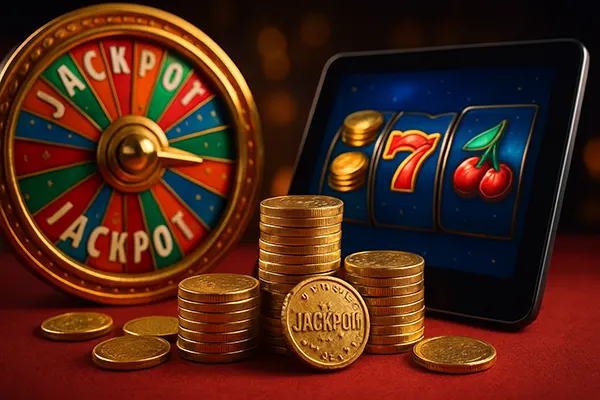
How RTP and Volatility Influence Jackpot Slot Choices: Real Case Analysis
Choosing a jackpot slot is more than a matter of luck — it’s a strategic decision shaped by the game’s mathematical foundations. Two of the most critical elements behind this choice are Return to Player (RTP) and volatility. These metrics determine not only how much a slot is likely to pay out over time but also how frequently and in what amounts. This article presents a practical breakdown of how these two factors influence real-world jackpot slot selections, using up-to-date case examples from 2025.
Understanding RTP and Its Role in Slot Performance
RTP, or Return to Player, refers to the percentage of total wagered money that a slot is expected to pay back to players over the long term. A higher RTP theoretically suggests better returns. However, it does not guarantee frequent wins — instead, it gives a statistical average. For instance, a game with a 96.5% RTP pays back 96.5 kr for every 100 kr wagered on average, but this can only be observed over thousands of spins.
In 2025, many players in the Danish market are increasingly seeking slots with an RTP above 95%, as transparency and fairness remain top priorities. Games like Mega Joker (NetEnt) continue to thrive due to their adjustable RTPs, where using optimal strategy can raise the payout potential.
However, some jackpot slots deliberately set RTPs lower than average (e.g., 91–93%) to compensate for large progressive prize pools. In these cases, players must weigh short-term losses against long-term jackpot opportunities.
Real Case: RTP Impact in Major Jackpots
A notable case is Microgaming’s “Mega Moolah,” which maintains an RTP of around 88.12% — significantly lower than standard slots. Yet it remains extremely popular due to its potential for life-changing wins. The low RTP is a trade-off accepted by players targeting massive prizes.
Conversely, NetEnt’s “Divine Fortune” offers a higher RTP of 96.59% with a fixed jackpot structure. While the payouts are more modest, they occur with greater regularity. In this case, high RTP directly correlates with more frequent mid-sized wins, attracting budget-conscious players.
This contrast highlights how RTP levels influence jackpot slot selection based on players’ risk tolerance and win expectations. Some chase dreams; others prefer consistent entertainment with a fair edge.
The Role of Volatility in Shaping Game Experience
Volatility — often referred to as variance — defines how often and how much a slot pays out. High volatility games offer fewer wins but larger rewards, while low volatility titles provide more frequent, smaller payouts. In jackpot slots, volatility becomes a decisive factor when balancing entertainment value and financial risk.
High volatility jackpot games like “Age of the Gods: God of Storms II” appeal to players who are comfortable with longer dry spells in exchange for the chance of scoring big. Such games require a larger bankroll and more patience but can deliver substantial returns.
On the other hand, players preferring low volatility tend to gravitate toward titles like “Hall of Gods,” which includes minor and midi jackpots that drop more frequently. The sense of progression and shorter wait times for rewards contributes to a steadier gameplay experience.
Real Case: Volatility Trends in 2025 Slots
In early 2025, Pragmatic Play released “Wolf Power Megaways Jackpot,” which combines high volatility with a range of tiered jackpots. Despite the extended dry streaks, the maximum win potential of 20,000x has made it a favourite among high-risk players in Europe.
Meanwhile, Play’n GO’s “Rise of Olympus 100” capitalises on medium volatility and moderate jackpots. This hybrid approach attracts a broad audience, offering both risk and regular engagement — proving effective in the Scandinavian markets.
The distinction is clear: volatility tailors the emotional arc of the game. Whether a player prefers adrenaline-pumping peaks or stable entertainment, understanding volatility ensures they choose slots aligned with their gameplay style.

Combining RTP and Volatility for Smart Slot Selection
When choosing a jackpot slot, the interplay between RTP and volatility is essential. A game with high RTP but also high volatility might seem favourable in theory, but in practice, it could lead to long losing streaks. Conversely, low volatility with moderate RTP may ensure longer playtime without substantial wins.
The smartest players in 2025 are those who match these mechanics to their gaming strategy. Casual players might opt for moderate RTP with low volatility, ensuring entertainment value without exhausting their budget. Meanwhile, experienced jackpot hunters often pursue high volatility slots despite lower RTPs, targeting rare but massive payouts.
Understanding this balance allows players to control their bankroll more efficiently, set realistic expectations, and avoid common pitfalls such as chasing losses or misjudging win frequencies.
Real Case: Balanced Slots in the Danish Market
Yggdrasil’s “Jackpot Raiders” exemplifies a balanced game, offering 96.3% RTP and medium volatility. Its combination of adventure-style gameplay, frequent bonuses, and achievable jackpots has led to its rise in popularity among Danish slot enthusiasts.
Another example is Red Tiger’s “Pirates’ Plenty: Battle for Gold.” With its RTP of 95.7% and volatile but well-paced mechanics, it’s gained traction among players seeking a middle ground between excitement and budget-friendly play.
These cases underscore a trend in 2025: informed slot choices are made not by chasing jackpots blindly, but by analysing mechanics, features, and mathematical structure to match individual preferences.
